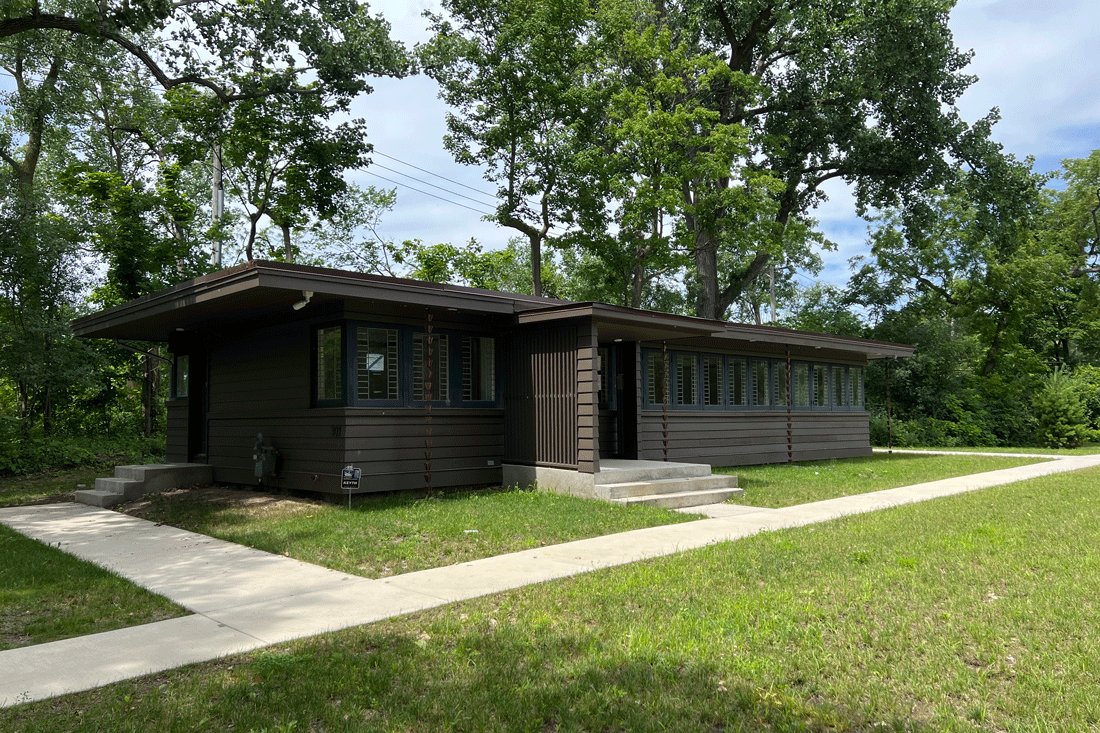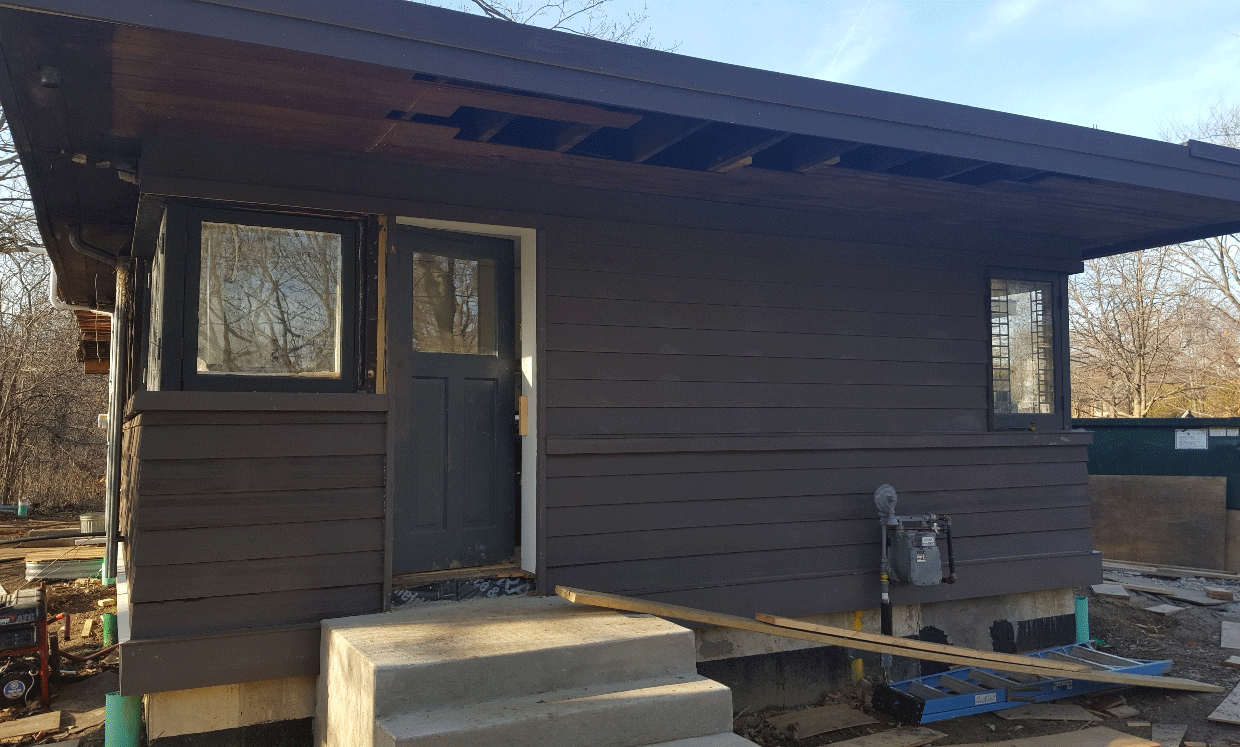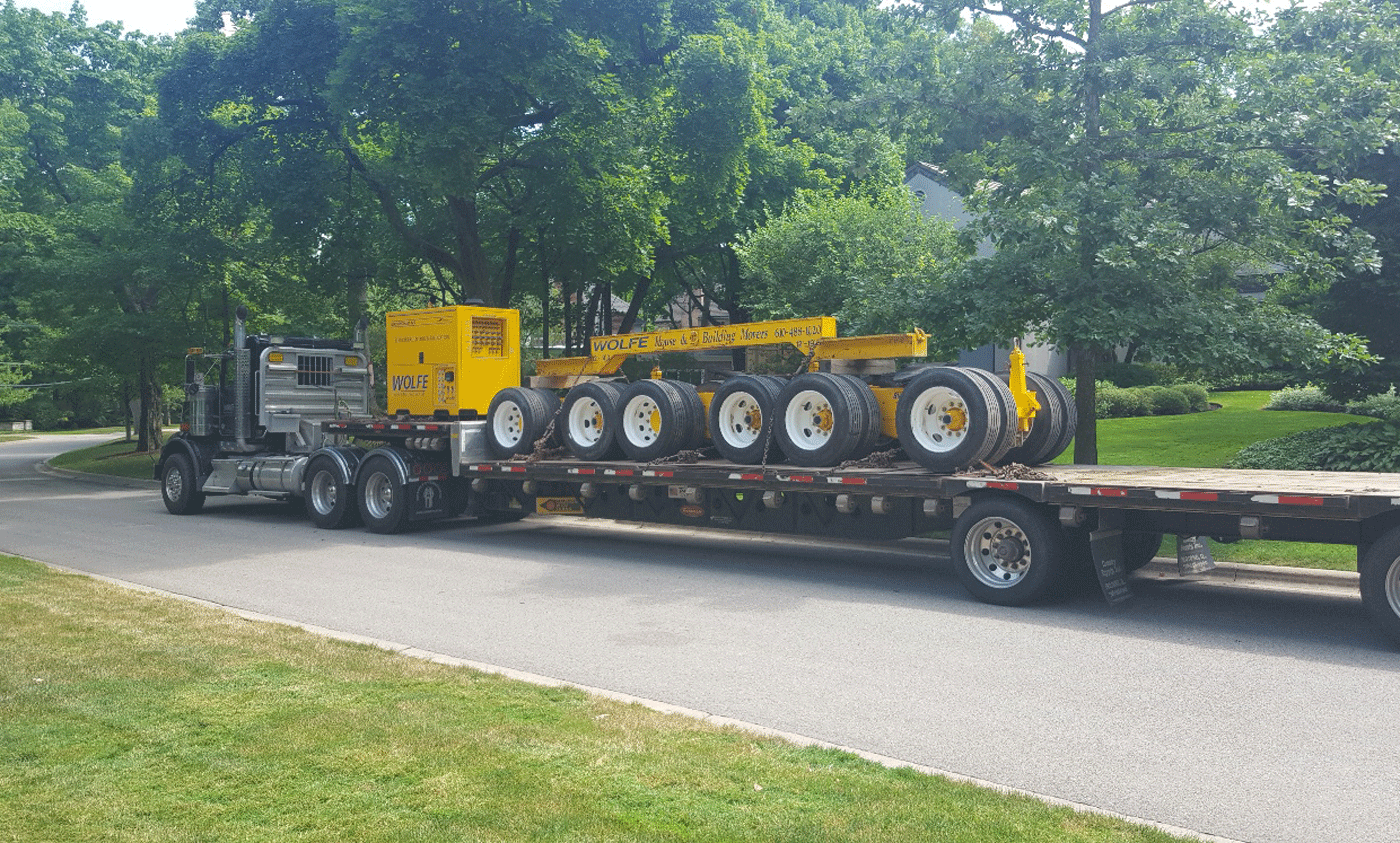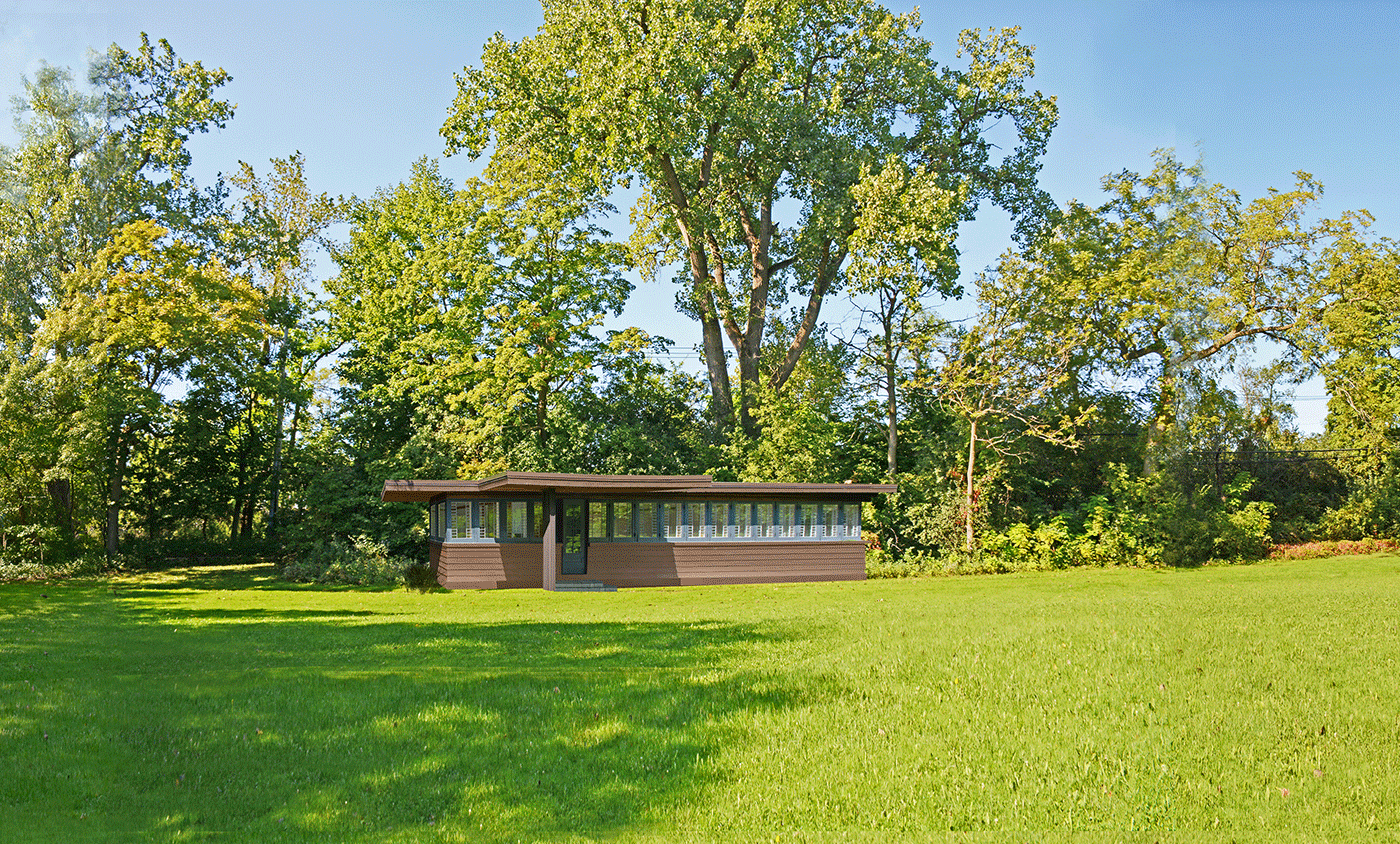The Frank Lloyd Wright-designed Cottage settled into its temporary home at Park 7n in Glencoe, IL on Tuesday, July 21st, before a welcoming committee of approximately 150 neighbors and friends. As neighbors, with leashed dogs and young children in tow, watched, Andrew Heck, owner of Wolfe Movers, of Indiana, manipulated three sets of roller dollies on which the Cottage had been placed. The wheels kept the house steady as it moved off its 239 Franklin Street lot and rolled down Franklin Road, with workers removing brush and tree limbs as needed before the structure turned into the park. It will stand at its current location for close to a month while a crawl space foundation is dug immediately to the west. Wolfe Movers will then return and slide the Cottage onto its new foundation where it will claim the address, 301 Maple Hill Road.
The house, a 1,100-sq. foot building designed in 1913 by Wright for the Booth family while their larger estate was being constructed, was under threat of demolition last year. The Glencoe Historical Society saved the building by taking possession of it, arranging for a new location and raising the funds to have it moved to the park site, which GHS is leasing on a long-term basis from the Glencoe Park District.
The Cottage is important both to the Wright legacy, and the legacy of American suburban living, as a precursor to the Usonian style house that Wright promulgated later in his career as affordable housing. This house offers insights into Wright’s thinking. The long front of the building features windows that show the beginnings of Wrightian-style art glass. The home is also important to the history of woman’s suffrage in Illinois, as Elizabeth Booth, as leader in the Illinois suffrage movement, lived in the Cottage with her children during the time of the Illinois suffrage victory.
The historical society undertook significant fundraising, with approximately $350,000 in contributions funding the building’s move and restoration. When the house is fully restored, it will be used for a museum and research center for information about Wright’s efforts in Glencoe, which included Ravine Bluffs, a subdivision of Wright-designed homes he and Sherman Booth built and sold. Glencoe, a suburb of Chicago along Lake Michigan’s North Shore, is home to the third largest collection of Wright-designed buildings and monuments in the world.
In 2015, GHS celebrated the centennial anniversary of Ravine Bluffs with a massive year-long Wright in Glencoe exhibition, housewalk and programming. The was recognized by the American Association of State and Local History with their coveted Albert B. Corey Award. It also received The Wright Spirit Award from the Frank Lloyd Wright Building Conservancy. The historical society, an all-volunteer group continues to collect, preserve, and interpret Wright’s influence and architecture in Glencoe.






